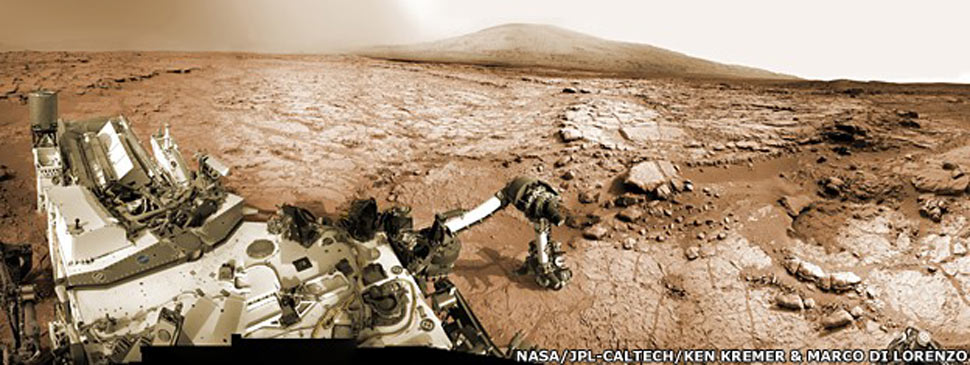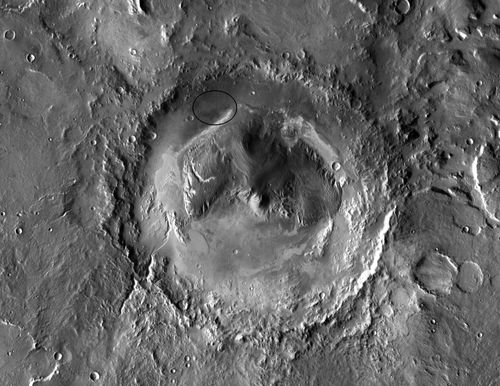Gale Crater

NASA's Curiosity rover at work in Gale Crater.

Gale Crater seen from orbit.
Gale Crater is a large crater on Mars that is the landing and exploration site of NASA's Mars Curiosity rover. It has a diameter of 14 kilometers (96 miles) and lies at coordinates 5.4°S ,137.8°E in the northwestern part of the Aeolis quadrangle. At its center is a mountain, called Mount Sharp, which rises about 5 kilometers (3 miles) from the crater floor -- more than Mount Rainier rises above Seattle. Layering in the central mountain suggests it is the surviving remnant of an extensive sequence of deposits. Gale Crater has an area roughly equivalent to that of Connecticut and Rhode Island combined. It is named for the Australian astronomer Walter F. Gale.
The exposed layers on Mount Sharp tell a story about what Mars was like in the past, perhaps spanning much of the history of the Red Planet. Studies from orbit have revealed that the layers have different minerals depending on their height. Near the bottom of the mountain are clay minerals, and above these, layers with sulfur and oxygen-bearing minerals. Flowing water appears to have carved channels in both the central mountain and the crater wall. To get to Mount Sharp, Curiosity landed land in a flatter part of the crater and is now slowly working its way upward, layer by layer. En route, the rover will investigate how the layers formed and the environments in which they formed.
Discovery of an ancient lake environment
A little more than a year after Curiosity began its investigations in Gale Crater, scientists concluded that a lake once occupied the crater and that this body of water would, over a period of millions of years, have been capable of supporting primitive life of the type known as chemolithoautotrophs – microorganism that break down the minerals in rocks as a source of energy. On Earth, such life forms exist underground, in caves, and at the bottom of the ocean.


